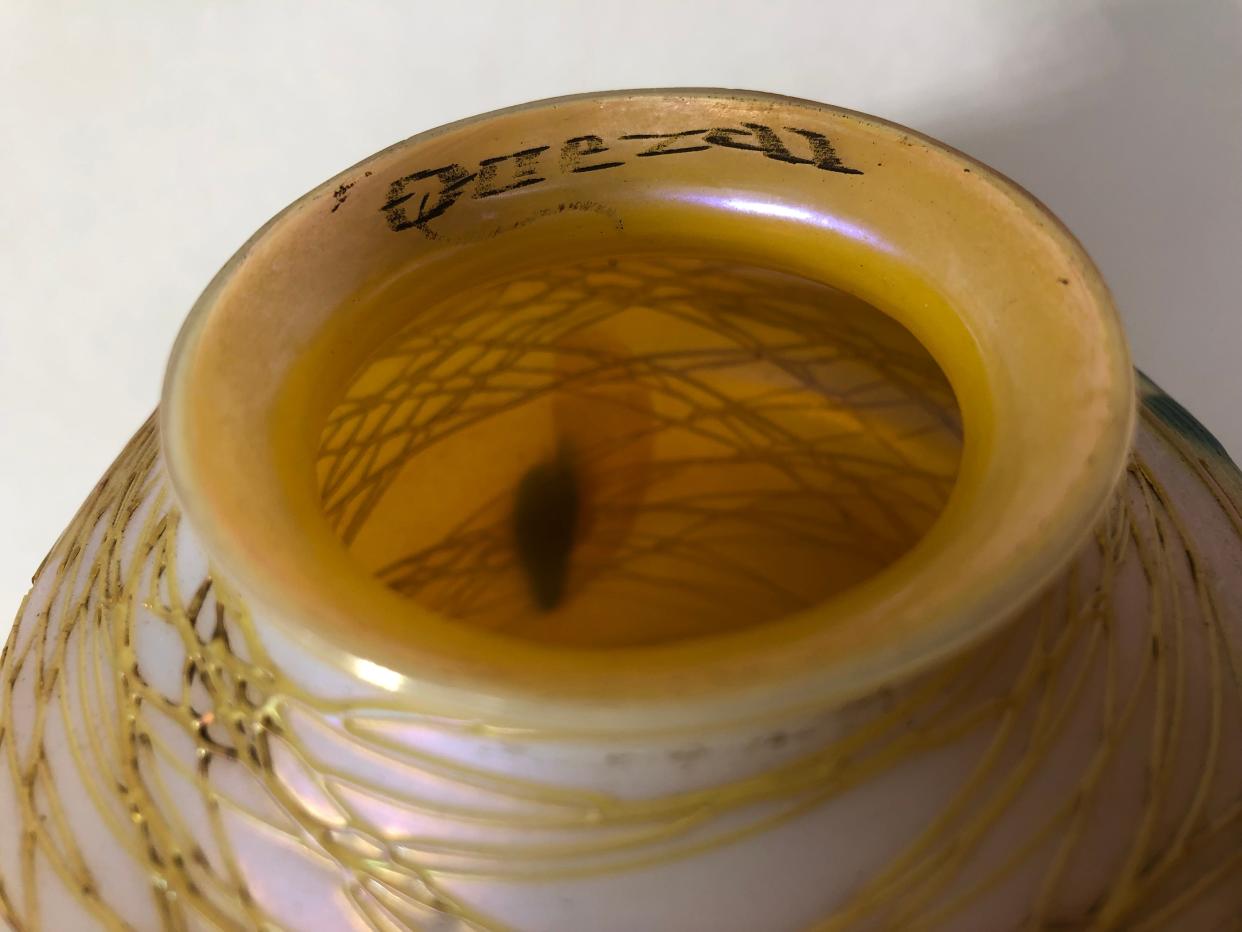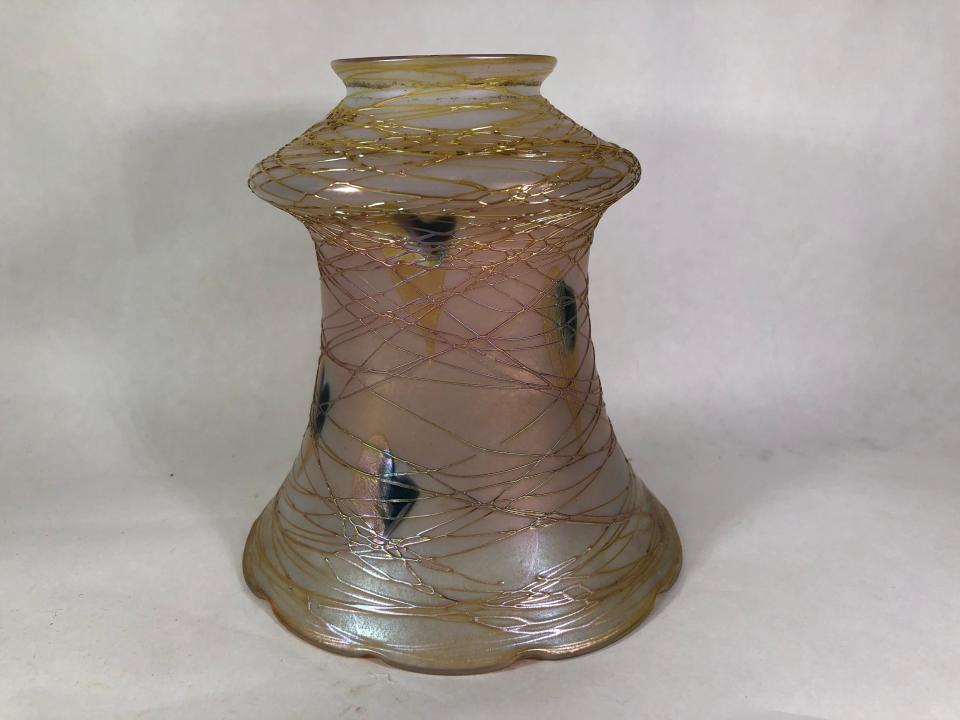Antiques: The best art glass you've never heard of

Attention all you art glass lovers! Here's a name you've probably never heard of but belongs firmly implanted in your head: Quezal.
It might be enough to write that the Metropolitan Museum of Art (among others) has and displays a number of pieces of Quezal, but there's more to the story than that. The stuff is old, scarce and rather spendy, but it rivals the very best of Tiffany and indeed has its roots in that storied firm. Let's glide through its brief but interesting history.
If the name sounds vaguely familiar, that's because it was inspired by the quetzal bird, a strikingly iridescent green bird with a long tail found in Central America. Quezal the firm was founded in 1900 by a small group that included two former Louis Comfort Tiffany employees: Martin Bach and Thomas Johnson.
The pair set out to create premium-quality art glass in the Art Nouveau style that was sweeping through Europe and America. It was a new look, intentionally divorced from anything that had gone before, and aimed to incorporate the sweeping lines and colors that appeared in nature. Widely popular at first, the aesthetic proved transitory, and by 1910, was seen to be stuffy and old-fashioned.
Nonetheless, Quezal glass would prove to be an enduring example of the genre.

Underfunded from the start, Quezal was already in financial trouble by 1905, but managed to limp through several ownership and personnel changes on the strength of its product line. Both Bach and Johnson were exceedingly skilled in the art of glassblowing and their pieces compared favorably to the best of Tiffany.
However, their relatively high prices and limited output proved to be further challenges. Quezal's product line consisted mostly of small tableware pieces and lamp shades; all exceedingly beautiful but not enough to sustain growth. Some pieces received silver overlays from the likes of Alvin and Gorham, but profitability remained elusive. After a string of departures and a turn towards industrial glass production, the company closed for good in 1924.
Among the pieces that occasionally turn up today, the most common are lamp shades and vases. No two pieces are identical, and among the most favored are those that include a spider web-like decoration made by wrapping thin threads of amber glass in a random pattern around the vessel. Many of these designs were complicated and required a substantial degree of expertise to complete.
In 1907, lamp shades with this and similar features retailed for $7.50-$20, the equivalent of about $250-$650 today, and that's just about what you can expect to pay these days if you're lucky enough to find one. Relatively little of the firm's ephemera and sales brochures have survived, so it can be difficult to identify exactly what you have. Typically, the name "Quezal" was engraved somewhere on the product along with a letter or number of uncertain meaning. Later production sometimes included a paper label, but those often disappeared through the years. Watch out for reproductions too, although the quality of those do not compare to the real thing.
So there you are. The best of Quezal came during its earlier days when the original founders were active and their creativity was running rampant. Those pieces are strikingly beautiful, their glowing iridescence and sunset colors as good or better than anything else you'll ever see. The internet is full of gushing descriptions of Quezal, even from those art glass connoisseurs who actually know what they're talking about. For our part, we're always on the lookout for Quezal, and you should be too.
Mike Rivkin and his wife, Linda, are longtime residents of Rancho Mirage. For many years, he was an award-winning catalogue publisher and has authored seven books, along with countless articles. Now, he's the owner of Antique Galleries of Palm Springs. His antiques column appears Sundays in The Desert Sun. Want to send Mike a question about antiques? Drop him a line at info@silverfishpress.com
This article originally appeared on Palm Springs Desert Sun: Antiques: The best art glass you've never heard of

